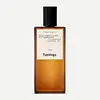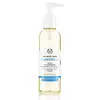What's inside
What's inside
 Key Ingredients
Key Ingredients

 Benefits
Benefits

 Concerns
Concerns

 Ingredients Side-by-side
Ingredients Side-by-side

Glycine Soja Oil
EmollientPrunus Amygdalus Dulcis Oil
Skin ConditioningHelianthus Annuus Hybrid Oil
EmollientCaprylic/Capric Triglyceride
MaskingEthylhexyl Palmitate
EmollientC12-15 Alkyl Benzoate
AntimicrobialIsohexadecane
EmollientPolysorbate 85
EmulsifyingSorbitan Trioleate
EmulsifyingSesamum Indicum Seed Oil
EmollientOctyldodecanol
EmollientParfum
MaskingLinalool
PerfumingTocopherol
AntioxidantLimonene
PerfumingWater
Skin ConditioningAnthemis Nobilis Flower Oil
MaskingCitric Acid
BufferingGlycine Soja Oil, Prunus Amygdalus Dulcis Oil, Helianthus Annuus Hybrid Oil, Caprylic/Capric Triglyceride, Ethylhexyl Palmitate, C12-15 Alkyl Benzoate, Isohexadecane, Polysorbate 85, Sorbitan Trioleate, Sesamum Indicum Seed Oil, Octyldodecanol, Parfum, Linalool, Tocopherol, Limonene, Water, Anthemis Nobilis Flower Oil, Citric Acid
Ingredients Explained
These ingredients are found in both products.
Ingredients higher up in an ingredient list are typically present in a larger amount.
This ingredient is an emollient, solvent, and texture enhancer. It is considered a skin-softener by helping the skin prevent moisture loss.
It helps thicken a product's formula and makes it easier to spread by dissolving clumping compounds.
Caprylic Triglyceride is made by combining glycerin with coconut oil, forming a clear liquid.
While there is an assumption Caprylic Triglyceride can clog pores due to it being derived from coconut oil, there is no research supporting this.
Learn more about Caprylic/Capric TriglyceridePrunus Amygdalus Dulcis Oil comes from the sweet almond, a tree native to Iran. This oil has no fragrance and is non-volatile.
Almonds contain healthy fats, vitamins, and minerals. It is a rich source of Vitamin E, a great antioxidant and skin conditioning ingredient. Sweet almond oil contains fatty acids such as linolenic acid and triglycerides.
The content of sweet almond oil makes it a great emollient; it can help soften and hydrate your skin. Emollients create a barrier over your skin to trap moisture in. Sweet almond oil has antioxidant properties.
Those with an almond allergy should be careful of this ingredient and speak with a professional about using it in your skincare.
This ingredient may not be fungal-acne safe.
Learn more about Prunus Amygdalus Dulcis OilTocopherol (also known as Vitamin E) is a common antioxidant used to help protect the skin from free-radicals and strengthen the skin barrier. It's also fat soluble - this means our skin is great at absorbing it.
Vitamin E also helps keep your natural skin lipids healthy. Your lipid skin barrier naturally consists of lipids, ceramides, and fatty acids. Vitamin E offers extra protection for your skin’s lipid barrier, keeping your skin healthy and nourished.
Another benefit is a bit of UV protection. Vitamin E helps reduce the damage caused by UVB rays. (It should not replace your sunscreen). Combining it with Vitamin C can decrease sunburned cells and hyperpigmentation after UV exposure.
You might have noticed Vitamin E + C often paired together. This is because it is great at stabilizing Vitamin C. Using the two together helps increase the effectiveness of both ingredients.
There are often claims that Vitamin E can reduce/prevent scarring, but these claims haven't been confirmed by scientific research.
Learn more about Tocopherol